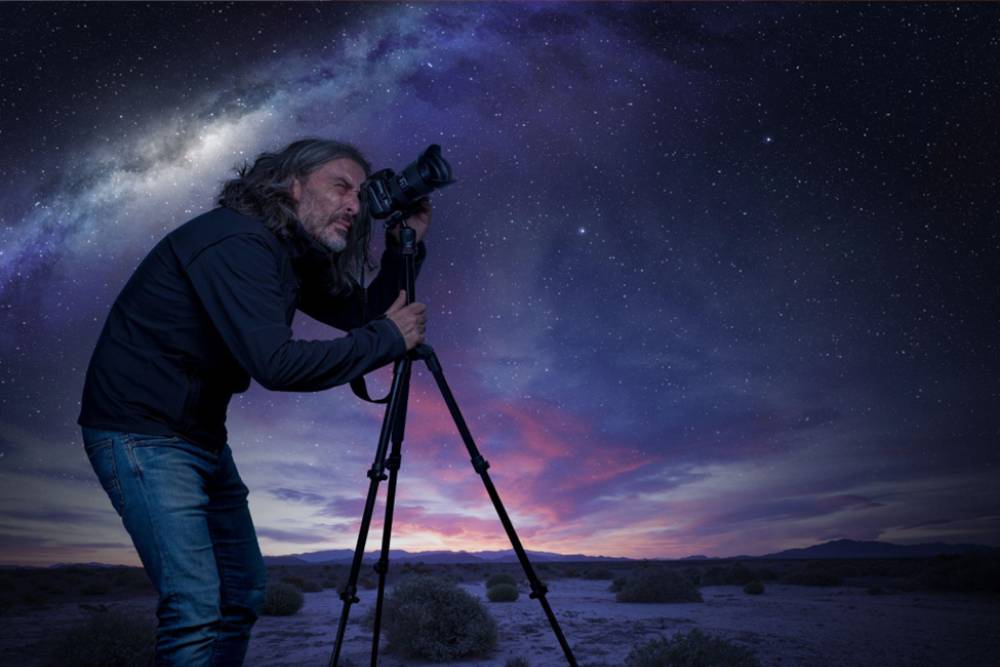
With its pristine landscapes and isolated natural areas, Lake Powell is one of the best places for stargazing. Visitors who take the time to look up after dark will be rewarded by a stunning spread of stars and a visible Milky Way. Night sky photography, also called astrophotography, is a great way to fully appreciate Lake Powell’s starry skies while creating beautiful photos that will last for a lifetime and can show even more stars than what the human eye can see on its own.
Astrophotography is a little trickier than regular photography and requires some specific camera gear and settings to get right. However, whether you’re a beginner photographer using your smartphone or a professional with the ultimate gear collection, it’s possible to take incredible astrophotography photos that you’ll be proud to show off.
Follow these tips to take great photos of Lake Powell’s starry skies.
1. Head Somewhere Dark
This might seem self-explanatory, but light pollution from cities, towns, cars, and even flashlights can make it more difficult to see a large number of stars in the night sky. Locations like Lake Powell, which are very isolated from major cities and towns, are ideal for stargazing and astrophotography. Choose the days furthest from a full moon to further reduce light in the sky.
2. Bring a Tripod
Because you’re shooting at night, astrophotography requires a long exposure to take in enough light for the photo. The long shutter speed means that any shakiness from holding the camera will make your picture blurry, so use a tripod to keep your images as crisp and clear as possible.
3. Take Advantage of Night Mode
Many smartphone and digital cameras today come with a pre-programmed setting for taking photos of the night sky. Look for names like “Night Mode” or “Star Scape” in your camera’s settings to make it easier to take great photos as a beginner.
4. Find an Interesting Landscape
The best astrophotography photos aren’t of just the stars– they feature natural elements such as mountains, trees, or water to add interest to the photo. Finding an interesting location can make for a beautiful and eye-catching composition.
5. Set Your Aperture as Low as Possible
Because the night sky is so dark, your camera’s shutter needs to stay open for a longer time to let in enough light for a quality photo. A lens with a low aperture, or f-stop, will make it easier to get that light.
6. Opt for a Wide-Angle Lens
Since astrophotography is a kind of landscape photography, you’ll want to choose a wide-angle lens for your camera when possible to get as much of the landscape in the shot as possible.
7. Don’t Ignore the Moon
The Milky Way may be the star of the show (no pun intended), but the moon can be pretty beautiful, too. Because the moon is so bright, it can be easier to get great shots of it, even with a typical smartphone camera. Nights near the full moon are best for getting the clearest, brightest shots.
8. Put the Camera Away for a While
It can be exhilarating to try and get the perfect starry sky shot, but at some point in the evening make sure you remember to put the camera down for a few minutes and be present in the moment. Staring up at the sky is an incredible way to appreciate our place in the universe and connect with nature.
Professional Guide Services in Beautiful Lake Powell
Whether you’re coming to Lake Powell for the stargazing, the photography opportunities, outdoor adventure, relaxation, or any other reason, Lake Powell Guide Services can help you plan the perfect trip. We have a team of professional guides who are knowledgeable about the Lake Powell area and can help your family enjoy the Lake Powell area to the fullest without stress. We have dedicated photography excursions as well as guided fishing trips, camping trips, and more. Contact us today for more information or to book your trip.
